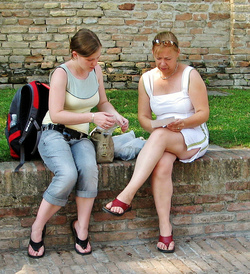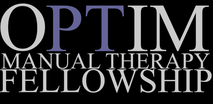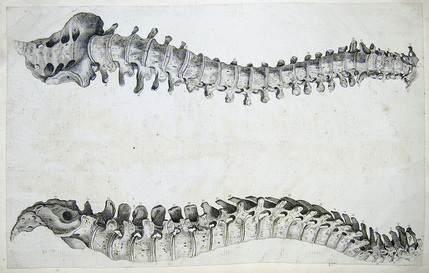- Home
- About Us
- TSPT Academy
- Online Courses
-
Resources
- Newsletter
- Business Minded Sports Physio Podcast
- Day in the Life of a Sports PT
- Residency Corner
-
Special Tests
>
-
Cervical Spine
>
- Alar Ligament Test
- Bakody's Sign
- Cervical Distraction Test
- Cervical Rotation Lateral Flexion Test
- Craniocervical Flexion Test (CCFT)
- Deep Neck Flexor Endurance Test
- Posterior-Anterior Segmental Mobility
- Segmental Mobility
- Sharp-Purser Test
- Spurling's Maneuver
- Transverse Ligament Test
- ULNT - Median
- ULNT - Radial
- ULNT - Ulnar
- Vertebral Artery Test
- Thoracic Spine >
-
Lumbar Spine/Sacroiliac Joint
>
- Active Sit-Up Test
- Alternate Gillet Test
- Crossed Straight Leg Raise Test
- Extensor Endurance Test
- FABER Test
- Fortin's Sign
- Gaenslen Test
- Gillet Test
- Gower's Sign
- Lumbar Quadrant Test
- POSH Test
- Posteroanterior Mobility
- Prone Knee Bend Test
- Prone Instability Test
- Resisted Abduction Test
- Sacral Clearing Test
- Seated Forward Flexion Test
- SIJ Compression/Distraction Test
- Slump Test
- Sphinx Test
- Spine Rotators & Multifidus Test
- Squish Test
- Standing Forward Flexion Test
- Straight Leg Raise Test
- Supine to Long Sit Test
-
Shoulder
>
- Active Compression Test
- Anterior Apprehension
- Biceps Load Test II
- Drop Arm Sign
- External Rotation Lag Sign
- Hawkins-Kennedy Impingement Sign
- Horizontal Adduction Test
- Internal Rotation Lag Sign
- Jobe Test
- Ludington's Test
- Neer Test
- Painful Arc Sign
- Pronated Load Test
- Resisted Supination External Rotation Test
- Speed's Test
- Posterior Apprehension
- Sulcus Sign
- Thoracic Outlet Tests >
- Yergason's Test
- Elbow >
- Wrist/Hand >
- Hip >
- Knee >
- Foot/Ankle >
-
Cervical Spine
>
- I want Financial Freedom
- I want Professional Growth
- I want Clinical Mastery
 A student of mine recently asked me if I noticed a pattern between patients sitting with their legs crossed and dysfunctional sideglides. I told him I never noticed it, but hadn't really been looking either. The more I thought about it, I remembered I regularly prefer to sit with my R leg crossed over my left. I have a history of dysfunctional sideglides to the L in the lumbar spine, which is equivalent to I prefer to not load the L side of my body. In crossing my R leg over my L, my lumbar spine naturally goes into a R lumbar sidebend, thus, unloading the L side of my lumbar spine. For those of you unfamiliar with the concepts of repeated motions, each joint and the nervous system have a "norm" for stimulation and, when altered regularly, can become symptomatic. The most common example is flexion and extension in the lumbar spine. Most people spend excessive amount of time in lumbar flexion (think about how much we sit, slouch and bend forward) and become hypersensitive with loading the spine in extension, especially with an injury into flexion. As a result, extension becomes both limited and painful. In order to treat this restriction, we have to reset the nervous system back to the "norms" for lumbar extension. The same applies to my personal example. I have a loss of loading on the L side of my lumbar spine and prefer to sit in a cross-legged position that unloads the L side of my lumbar spine. I have also noted that when I stand with my weight shifted to one side, it typically is to unload the L side. How does this apply to you? One thing could be to regularly observe your patients with dysfunctional sideglides if they prefer static postures that unload the involved side. At this point, we need to educate our patients on proper posture and regular body mechanics (and repeated motions), particularly during the symptomatic period. It's not that our patients cannot return to behavior unloading the spine in various directions, but we have to find a balance, especially when in physical therapy. -Chris
Like this post? Then check out the Insider Access Page for advanced content! And check out similar posts below!
1 Comment
Transportation and logistics play a crucial role in the efficient movement of goods and services globally. The integration of advanced technologies has streamlined processes, making supply chains more resilient and responsive. Innovations such as real-time tracking systems, autonomous vehicles, and drone deliveries have revolutionized the industry. For businesses, optimizing logistics can significantly reduce costs and improve customer satisfaction. For more insights into the latest trends in transportation and logistics, you can follow this link. Ultimately, a well-coordinated transportation and logistics network is vital for economic growth and competitiveness.
Reply
Leave a Reply. |
Dr. Brian Schwabe's NEW Book in partner with PaleoHacks!
Learn residency-level content on our
Insider Access pages We value quality PT education & CEU's. Click the MedBridge logo below for TSPT savings!Archives
July 2019
Categories
All
|









 RSS Feed
RSS Feed